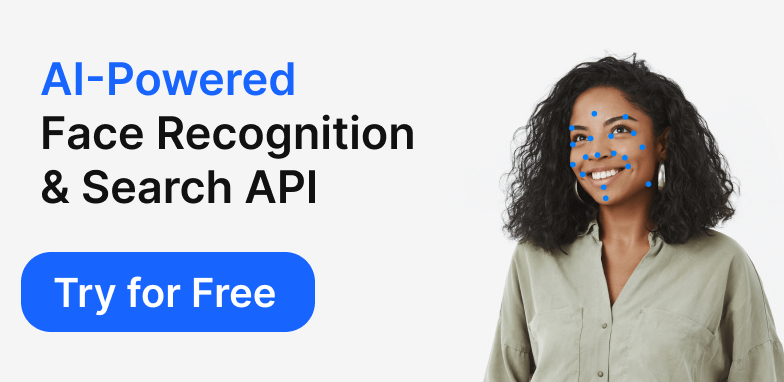
Facial Recognition in Cybersecurity: How It Enhances Security & Prevents Fraud

Facial recognition is a form of biometric authentication that uses unique facial features to verify identity. Unlike passwords that can be forgotten or stolen, facial biometrics provide a more secure and personalized approach to access control. Businesses, financial institutions, and government agencies have begun integrating facial recognition into their security systems, enhancing protection against unauthorized access, identity fraud, and cyberattacks.
However, as with any technological advancement, facial recognition comes with challenges. Privacy concerns, ethical considerations, and the risk of misuse must be carefully managed to ensure responsible implementation. Despite these concerns, the growing adoption of the technology highlights its increasing importance in modern cybersecurity.
In this blog post, we will explore the benefits and challenges of facial recognition in cybersecurity, examining how it is shaping the way we protect digital assets and personal information.
The Benefits of Facial Recognition in Cybersecurity
As cyber threats continue to evolve, organizations and individuals alike seek stronger, more reliable security measures. Facial recognition technology has emerged as a powerful tool in cybersecurity, offering enhanced protection while improving user experience. Below, we explore how facial recognition strengthens authentication, reduces identity theft, and enhances convenience.
Enhancing Authentication and Access Control
Traditional authentication methods, such as passwords and PINs, have long been the primary means of securing digital and physical access. However, these methods are vulnerable to breaches, phishing attacks, and password reuse issues. Facial recognition provides a more secure alternative by using unique biometric markers to verify identity. Unlike passwords that can be forgotten, stolen, or hacked, the technology relies on a person’s distinct facial features, making unauthorized access significantly more difficult.
Businesses and government agencies have increasingly adopted the technology for access control in high-security environments. By implementing this technology, organizations can ensure that only authorized personnel can enter restricted areas, access sensitive data, or use secure applications. Additionally, multi-factor authentication (MFA) solutions now integrate facial recognition alongside other security measures, further strengthening protection against cyber threats.
Reducing Identity Theft and Fraud
Identity theft remains a pressing concern in today’s digital landscape. Cybercriminals exploit stolen credentials to gain access to bank accounts, social media profiles, and corporate networks. Since facial recognition technology requires a live, real-time image for authentication, it is far more difficult for attackers to use stolen photos or credentials to impersonate someone.
Financial institutions and e-commerce platforms leverage the technology to prevent fraudulent transactions. By verifying a user’s identity through their facial biometrics, banks can add an extra layer of protection to online banking and mobile payment systems. This not only safeguards personal data but also minimizes financial losses due to fraud.
Furthermore, advancements in liveness detection technology make it even harder for cybercriminals to manipulate facial recognition systems. Modern systems can detect deepfakes, masks, or recorded videos, ensuring that only legitimate users can gain access.

Improving User Experience and Convenience
While security is a top priority, user experience plays a crucial role in the adoption of any cybersecurity solution. Facial recognition technology streamlines authentication processes, eliminating the need to remember complex passwords or carry physical authentication tokens. With just a quick scan of their face, users can unlock their devices, access secure applications, or complete transactions seamlessly.
Tech companies have integrated the technology into smartphones, laptops, and smart home devices, making it a convenient and secure alternative to traditional login methods. Many businesses also use this technology for contactless check-ins, allowing employees and customers to authenticate their identities quickly without physical interaction.
Additionally, facial recognition reduces the frustration of password resets, which are a common source of security vulnerabilities. By replacing passwords with biometric authentication, organizations can enhance both security and usability, creating a more efficient and user-friendly cybersecurity environment.
Challenges and Concerns of Facial Recognition in Cybersecurity
While facial recognition technology offers significant advantages in cybersecurity, it also raises concerns that cannot be ignored. Issues related to privacy, security vulnerabilities, and regulatory compliance present challenges that organizations and individuals must address. Below, we explore the most pressing concerns surrounding the technology in cybersecurity.
Privacy Issues and Ethical Dilemmas
One of the biggest concerns surrounding facial recognition is privacy. Since this technology relies on collecting and storing biometric data, there is a risk of misuse, unauthorized surveillance, or data breaches. Unlike passwords or PINs, facial biometrics cannot be easily changed if compromised, making the protection of this sensitive data crucial.
Governments and private organizations use the technology for various purposes, from law enforcement to consumer authentication. However, many critics argue that widespread deployment could lead to mass surveillance, infringing on individuals’ right to privacy. In some cases, people may be monitored without their consent, raising ethical questions about transparency and data ownership.
Additionally, there are concerns about bias in facial recognition algorithms. Studies have shown that some systems exhibit racial or gender-based inaccuracies, leading to false identifications. If left unaddressed, such biases can result in unfair treatment, wrongful accusations, and discrimination. To ensure ethical use, developers and policymakers must focus on improving algorithm fairness, data protection, and user consent mechanisms.
Potential for Hacking and Spoofing
Despite its advanced security capabilities, the technology is not immune to cyber threats. Hackers have developed sophisticated techniques to bypass facial recognition systems, such as using high-resolution photos, deepfake technology, or 3D-printed masks to impersonate individuals. If a system lacks proper liveness detection, it can be tricked into granting access to unauthorized users.
Moreover, if a database containing facial biometric data is breached, the consequences can be severe. Unlike passwords, which can be reset, facial data is permanent. Once stolen, it can be exploited for identity theft, fraud, or unauthorized tracking. Cybercriminals may also sell compromised biometric data on the dark web, increasing the risk of large-scale identity fraud.
To counter these risks, cybersecurity experts recommend multi-factor authentication (MFA) that combines facial recognition with other security measures, such as fingerprint scanning, behavioral analysis, or one-time passcodes. Enhancing liveness detection and implementing anti-spoofing mechanisms can also strengthen the security of facial recognition systems.
Regulatory and Compliance Challenges
The rapid adoption of facial recognition technology has outpaced regulatory frameworks, leaving governments and organizations struggling to establish clear guidelines for its ethical use. Many countries have introduced data protection laws, such as the General Data Protection Regulation (GDPR) in Europe, which impose strict rules on how biometric data can be collected, stored, and processed. However, regulations vary widely across jurisdictions, creating compliance challenges for global businesses.
Companies using facial recognition must navigate a complex legal landscape to ensure they are not violating privacy rights. They must obtain explicit user consent, implement robust data security measures, and comply with local and international laws. Failure to do so can result in hefty fines, legal action, and reputational damage.
Additionally, governments continue to debate the limits of the technology in public spaces. While some argue it enhances security and law enforcement efforts, others push for stricter regulations or outright bans to prevent abuse. Striking a balance between security, privacy, and legal compliance remains a key challenge in the widespread adoption of this technology.
Conclusion
Facial recognition technology has become a significant component of modern cybersecurity, offering enhanced security, improved user convenience, and protection against identity fraud. By using unique biometric data, facial recognition provides a more reliable authentication method compared to traditional passwords, reducing the risk of unauthorized access and cyber threats.
However, its adoption also comes with challenges. Privacy concerns, ethical dilemmas, and the potential for security breaches highlight the need for responsible implementation. Organizations must prioritize data protection, ensure compliance with regulations, and integrate additional security measures, such as multi-factor authentication, to strengthen overall cybersecurity.
Ultimately, while the technology is not without its risks, its potential to enhance digital security is undeniable. By addressing its challenges and implementing it responsibly, businesses and individuals can harness its benefits while safeguarding sensitive information in an increasingly digital world.
